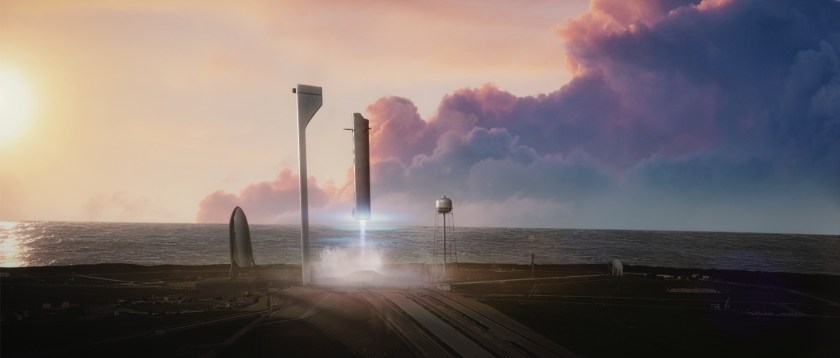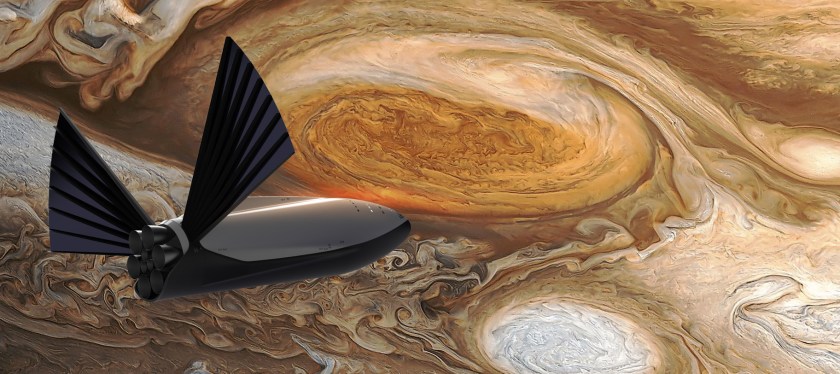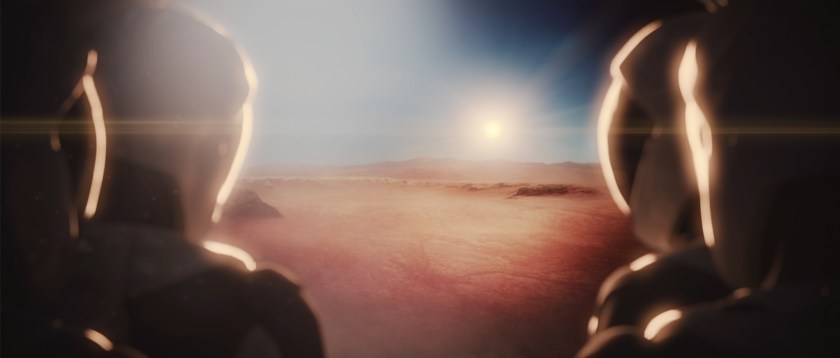Colonizing Mars may seem like pure science fiction, but if Elon Musk gets his way, it could start becoming a reality less than a decade from now. This week, the entrepreneur behind Tesla, Hyperloop, and Space X announced his plan to send 100 people from Earth to Mars in 80 days, creating a future where humans are a “multi-planetary species.”
In his Apple-like keynote speech, the Space X founder detailed his short, medium- and longterm goals for space travel. Musk’s initial quest is to make traveling to Mars safe, efficient, and affordable; the ticket price could be as low as $200,000, comparable to the cost of purchasing a home.
Concept rendering of the ITS once landed (Space X)
From there, Musk hopes to begin a colonization process that would eventually become self-sustaining. This plan would involve shuttling hundreds of rockets, which Musk hopes to reuse up to 1,000 times, from Earth to Mars every few years when the two planets are at their closest. If all goes according to plan, his shuttle system would take 40–100 years to operate on the scale he intends.
The Mars mission is the first step in the tech guru’s master plan to build a transit system throughout the solar system—but that starts with colonizing Mars first.
Musk’s plan is ambitious, to say the least. He estimates the first craft from his Interplanetary Transport System (ITS) could be ready in as little as four years. A system in the truest sense of the word, the ITS consists of the rocket, the spaceship, a fueling tanker, and propellant depots. Before the first spacecraft launches, though, the project will have significant financial and technological hurdles to overcome. The latter of which could solve the former, since Musk identified four key tech improvements that could lower costs by “5 million percent,” he said in his announcement.
The first technological hurdle is rocket reusability. While Space X is already working on autonomous rockets that land on their own, improvements could be made in this department. Musk’s plan heavily revolves around completing the trip in stages, beginning with a refueling pit stop while in the Earth’s orbit. This is the only way to get enough supplies to Mars that can support colonization. Obviously, a system would need to be developed to accommodate tankers refueling the rockets in orbit. Once they reach Mars, another system would also need to be created to manufacture rocket propellant on Mars since the rockets can’t carry enough for the round-trip journey. In order to achieve this, the right propellant would need to be used since the bulk of its production would occur on Mars. For this reason, Musk recommends a methane-based propellant.
That may seem like a hefty obstacle to overcome, but the tech challenges aren’t even the highest hurdle: Musk’s whole plan would cost at least $10 billion. While he has said getting people to space is his only motivation for making money, there’s no way Musk could be the lone backer of his project. Space X would have to get financial support from either the private or public sector (or both). The latter is a tantalizing possibility for Musk, especially given the privatization trends among the world’s various space agencies.
If potential backers were impressed by his well-detailed pitch made this week, his vision for ITS could become a reality sooner than you might expect. Space X’s plan does face some competition, though. Mars One is a plan with far less flexibility included. Announced in 2012, the goal is to colonize the Red Planet by 2023, with the caveat that its pioneers wouldn’t be able to return to Earth. Needless to say, it’s still recruiting members to join its team. However, Space X’s biggest competitor could be NASA, which plans to get there by the 2030s. While its timeline is longer than Space X’s, the agency has more than 40 years of experience exploring Mars.
To learn more about Musk’s plan, watch a five-minute supercut from this week’s colonization event below.
This article was featured in the InsideHook newsletter. Sign up now.


























